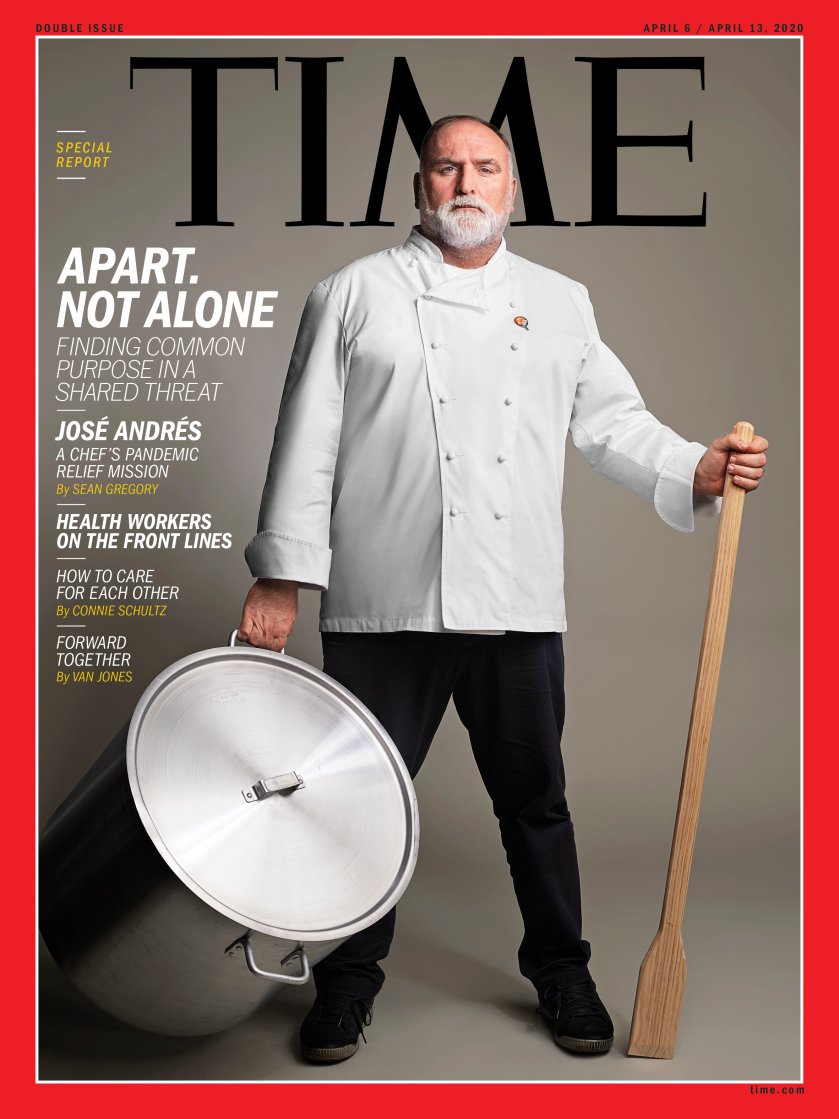Apart. Not alone.
Spanish Chef José Andrés appears in the cover of the latest issue of Time for his efforts to help feed those in need (first after Hurricane Maria and now through the COVID-19 pandemic). Next to his picture, the headline "Apart. Not Alone" has been stuck in my head for capturing with three simple words the way I've been feeling through the beginning of our remote teaching journey.

I'm very lucky that my first week went really well: 100% attendance and 0% technical issues. Students were happy to get back to class, get some sense of normalcy, see each other, work, and break their new routine for a while. Because of my own personal circumstance, my classes are a hybrid of synchronous and asynchronous teaching, which seems to make them comfortable, as they can work in some of the content at their own pace but also have direct contact and practice with me and the rest of their classmates. It was a little odd that things went so well and felt so “normal”, considering the completely-not-normal nature of our new class format.
Having to transition into remote teaching has provided me with some opportunities that I had not considered before, and I’m doing my best to take advantage of them and come up with other methods/activities/experiences that will help students enjoy our classes and improve their skills in new different ways. A simple benefit is the opportunity to group them with classmates that they don’t normally work with. My classrooms are not mobility-friendly, so my ability to have students work with different people is generally limited. However, Zoom breakout rooms allow me to group them in any way I want, so I’m keeping a log to make sure they all work with each one of their classmates at some point, reinforcing the sense of community that I try to foster in all of my classes. Another benefit has been discovering tools that I could have been using before but was unaware of. For instance, I will now use Flipgrid for my Medical Spanish class regularly (thanks, Rebekah Morris!), since it’s a wonderful way to have them practice oral skills in an extremely simple way. I try to include as much oral practice as possible in this class because students will need that more than anything when communicating with Spanish-speaking patients as future health providers.* Up until now, I had been using regular voice recordings, but Flipgrid includes video, which makes it more interactive; I’m also recruiting some colleagues to record videos as “patients” to have students reply to their specific questions and requests. Finally, my voiced-over videos covering and reviewing grammar and culture material for my 112 and 212 students have allowed them to repeat portions they may not understand at first, pause so that they can check notes, and even watch them more than once to make sure they understand everything. They also get to choose the best time to work on those, making sure they are alert and engaged. It seems that less pressure is resulting in more responsiveness.
But remote teaching has not only affected our interactions with our students. I have felt much more connected to many of the people around me than ever before, within the SPI department and around campus, both for work and for fun. A new Facebook group, several new WhatsApp group chats, and a weekly Zoom date for trivia are just a few samples of the “Apart. Not alone” attitude. My hope is that we, as a society, learn something from this extraordinary situation we’ve been forced to deal with and that the many positive changes we are making, both personally and as groups, remain after the storm has passed.
*As a side note, I’d like to make a request. If you know any health providers or groups that serve Spanish-speaking patients, please share the link below with them. Up until just a few days ago, the CDC had NO information about COVID-19 in Spanish. Me and other members of the Medical Spanish Taskforce tried to help by creating this, so please share. All information has been reviewed by MD members of the group. Thanks in advance.

Comments
Post a Comment